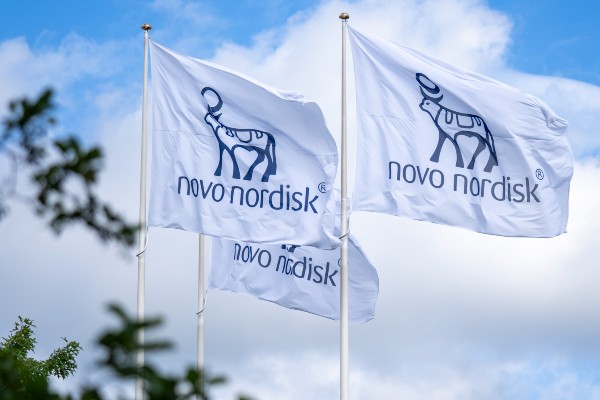
What to Watch for in Amazon's Q2 Earnings
Amazon Web Services
In the first quarter, this segment accelerated. Deals were larger and longer. Customers now focus on moving new workloads to the cloud instead of cost containment.
Generative AI is Now a Multi-Billion-Dollar Run Rate Business
Amazon noted that it would ramp capex in 2024 to meet demand. We think the firm is one of several obvious winners in AI, so we don't believe investors will have a problem with this.
Execution and Operating Margin Performance
This went well in the core e-commerce business in the first quarter and is a big storyline. Improvements in fulfillment are boosting margins and improving delivery times. Increased delivery speed means more frequent purchasing for Prime members. Management believes there is plenty of opportunity left. US consumers are trading down and looking for deals, while European consumers are more impacted by geopolitical events.
Advertising
This segment performed well again, up 24% year over year. Sponsored ads remain the big driver, but the recent introduction of ads to Prime Video represents a nice opportunity over the next several years.
Fair Value Estimate for Amazon
With its 3-star rating, we believe Amazon's stock is fairly valued compared with our long-term fair value estimate of $193 per share, which implies a 2024 enterprise value to sales multiple of 3 times and a 2% free cash flow yield. We think multiples are less meaningful for Amazon, given the ongoing heavy investment and rapid scaling that depresses its financial performance. However, we expect it to significantly increase free cash flow as it matures.
Over the long term, we expect e-commerce to continue to take share from brick-and-mortar retailers. We further expect Amazon to gain share online. We believe that over the medium term, covid pulled forward some demand by changing consumer behaviour and better penetrating some retail categories that previously had not gained as much traction online, such as groceries, pharmacy, and luxury goods. We think Prime subscriptions and their accompanying benefits, along with selection, price, and convenience, continue to drive the retail story. We also see international as a longer-term opportunity within retail. We model total retail-related revenue growing at a 9% compound annual growth rate over the next five years.
Read more about Amazon's fair value estimate
Key Morningstar Metrics for Amazon
Fair Value Estimate: $193.00
Morningstar Rating: 3 stars
Morningstar Economic Moat Rating: Wide
Morningstar Uncertainty Rating: High
Economic Moat Rating
We assign Amazon a wide moat based on network effects, cost advantages, intangible assets, and switching costs. The company has been disrupting the retail industry for more than two decades while emerging as the leading infrastructure-as-a-service provider via Amazon Web Services. This disruption has been embraced by consumers, driving change across the industry as traditional retailers have invested heavily in technology to keep pace. Covid-19 has accelerated this change, and given the company's technological prowess, massive scale, and relationship with consumers, we think Amazon has widened its lead, which we believe will result in economic returns well over its cost of capital for years to come.
We believe Amazon's retail business has a wide moat. It has network effects associated with its marketplace, whereby its many buyers and sellers continually attract more buyers and sellers. It has a cost advantage tied to purchasing power, logistics, vertical integration (proprietary brands, owned delivery, and so on), and a negative cash conversion cycle. And the business possesses intangible assets associated with technology and branding.
We also believe AWS is a Wide-Moat business. It has high customer switching costs, a cost advantage associated with economies of scale whereby few competitors can keep up with Amazon's investment pace, intangible assets arising from semiconductor and facility development, and a network effect associated with a marketplace for software created to make AWS work better.
Amazon's burgeoning advertising business has a narrow moat, in our view, based on intangible assets from its proprietary data on hundreds of millions of users, as well as a network effect again focusing on buyers and sellers meeting in the largest available venues.
Read more about Amazon's Economic Moat
Financial Strength
We believe Amazon is financially sound. Revenue is growing rapidly, margins are expanding, the company has an unrivaled scale, and its balance sheet is in great shape. In our view, the company's marketplace will remain attractive to third-party sellers, as Prime continues to tightly weave in consumers. We also see AWS and advertising driving overall corporate growth and continued margin expansion.
As of December 31, 2023, Amazon had $86.8 billion in cash and marketable securities, offset by $58.3 billion in debt. We also expect free cash flow generation, which suffered during the pandemic as the company invested heavily in facility expansion, content creation, and its transportation network, to return to normal over the next few years.
Read more about Amazon's financial strength
Risk and Uncertainty
Amazon's Uncertainty Rating is High. Despite being an e-commerce leader, the company faces a variety of risks.
Amazon must protect its leading online retailing position, which can be challenging as consumer preferences change (especially in the wake of covid, as they may revert to prior behaviors) and traditional retailers bolster their online presence. Maintaining an e-commerce edge has pushed the company to make investments in nontraditional areas, such as producing content for Prime Video and building out its transportation network. Similarly, the company must maintain an attractive value proposition for its third-party sellers. Some of these investment areas have raised investor questions in the past, and we expect management to continue to invest according to its strategy, despite periodic margin pressure from increased spending.
Read more about Amazon's risk and uncertainty
AMZN Bulls Say
Amazon is the clear leader in e-commerce and enjoys unrivaled scale to continue to invest in growth opportunities and drive the very best customer experience.
High-margin advertising and AWS are growing faster than the corporate average, which should continue to boost profitability over the next several years.
Amazon Prime memberships help attract and retain customers who spend more with Amazon. This reinforces a powerful network effect while bringing in recurring and high-margin revenue.
AMZN Bears Say
Regulatory concerns are rising for large technology firms, including Amazon. Further, the firm may face increasing regulatory and compliance issues as it expands internationally.
New investments – notably in fulfillment, delivery, and AWS – should dampen free cash flow growth. Also, Amazon's penetration into some countries might be harder than in the United States due to inferior logistical networks.
Amazon may not be as successful in penetrating new retail categories, such as luxury goods, due to consumer preferences and an improved e-commerce experience from larger retailers.
This article was compiled by Renee Kaplan


























